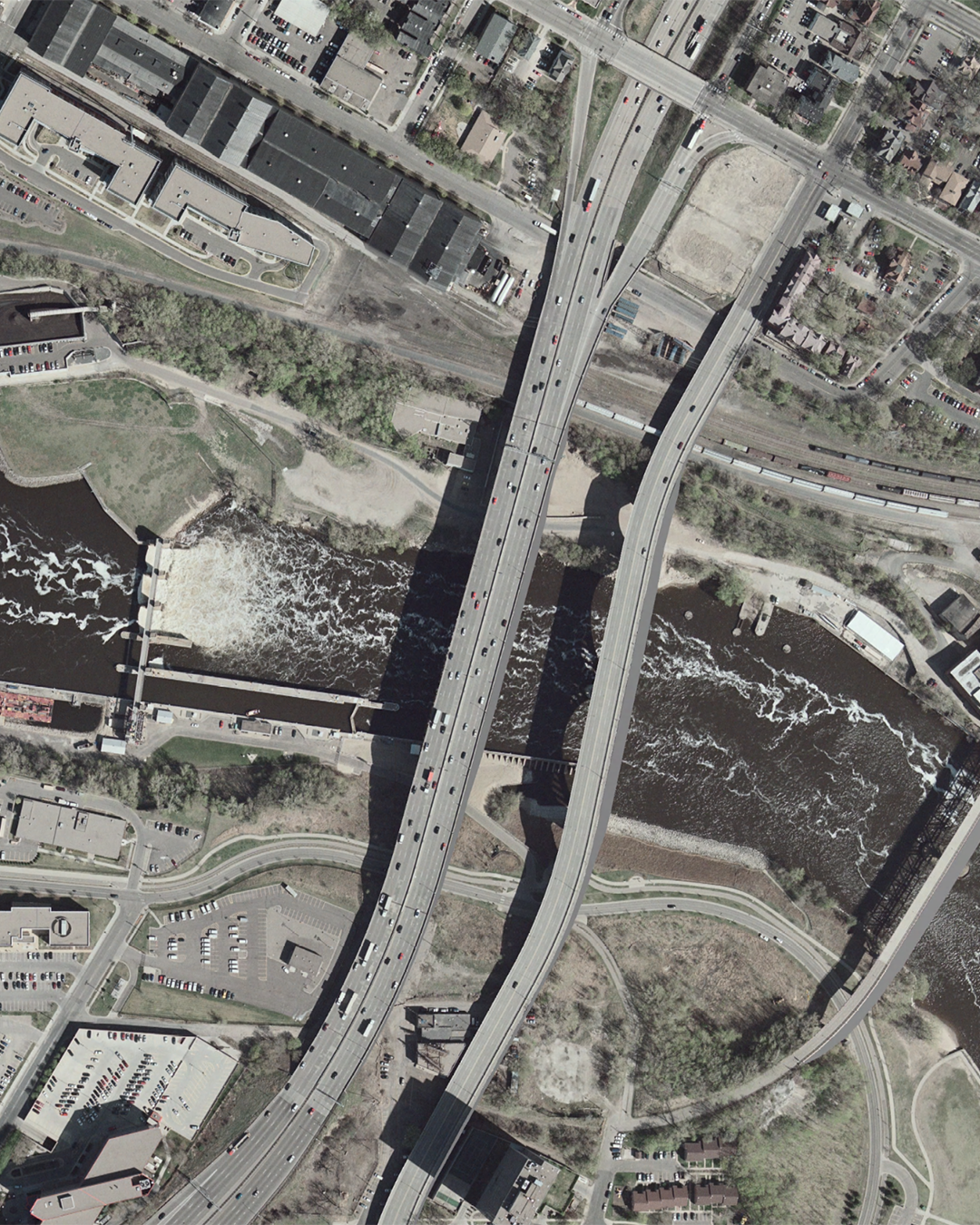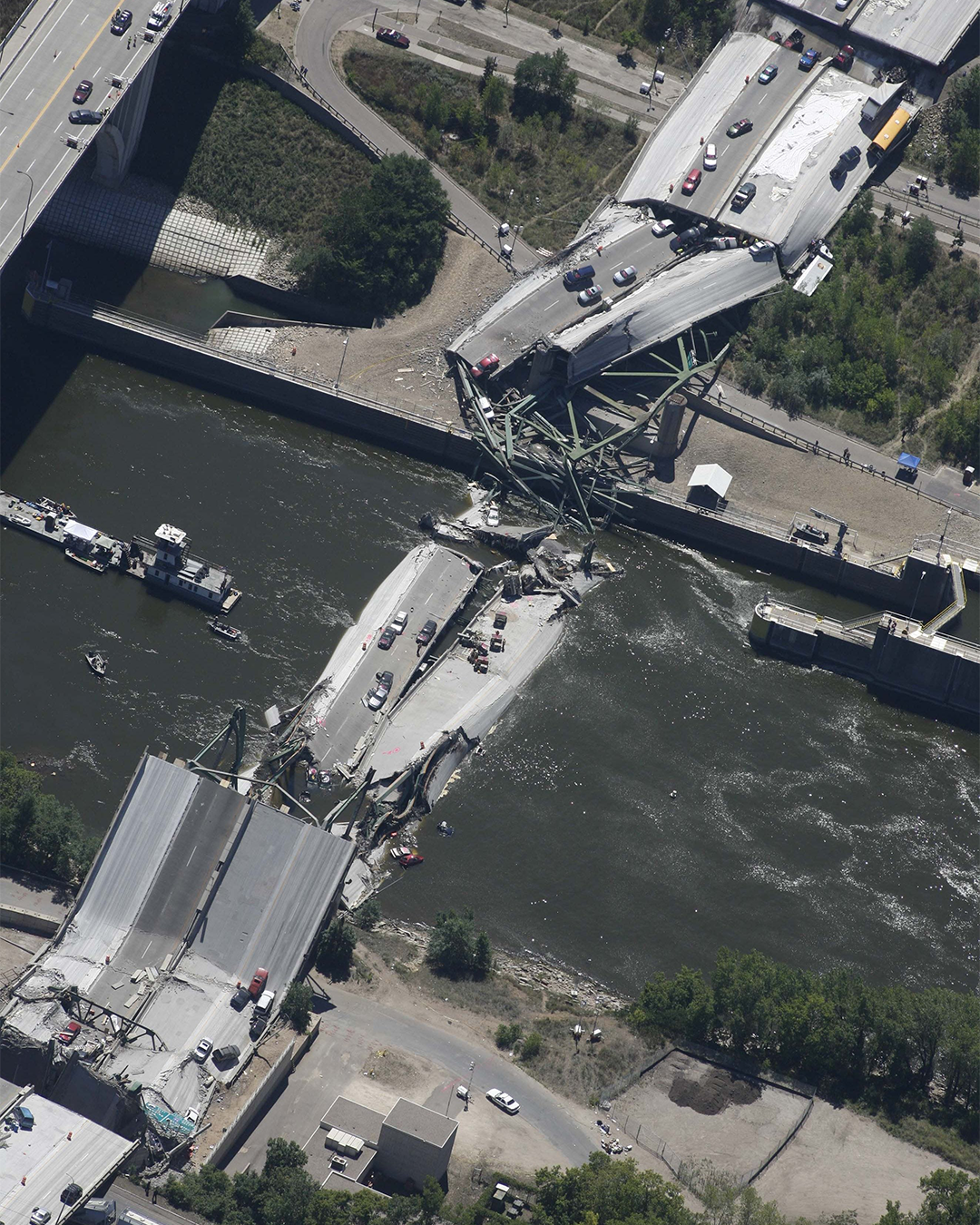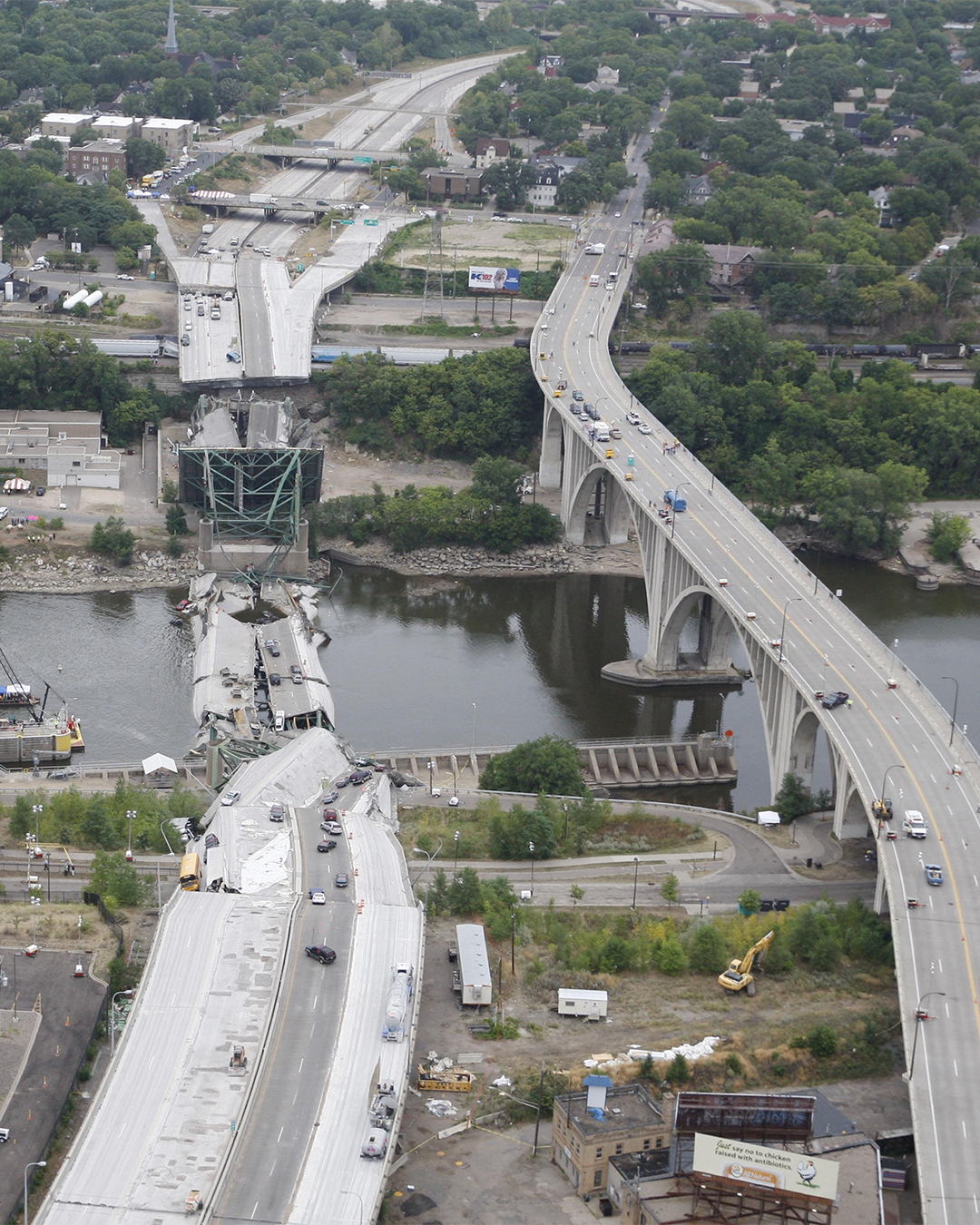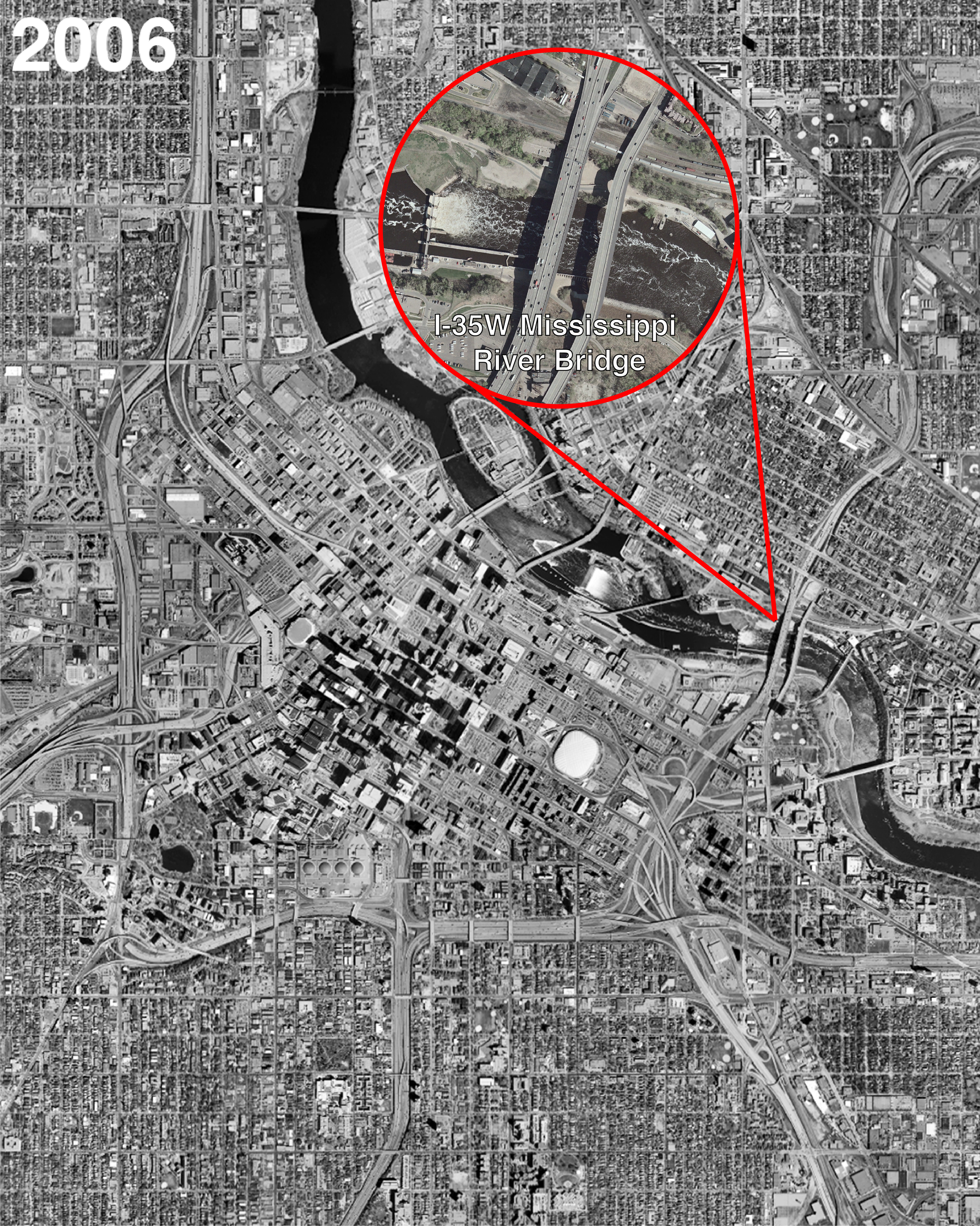MINNEAPOLIS: I-35 BRIDGE COLLAPSE




During the evening rush hour on Wednesday, August 1, 2007, the I-35W Mississippi River Bridge suddenly collapsed, injuring 145 people and killing 13. Flawed design combined with improper maintenance led to this catastrophic failure. Across the country, the inability of both the federal and state governments to properly fund highway maintenance (rather than continued expansion) has accelerated the decay of the highway infrastructure built in the middle of the 20th century. If cities want to prevent a collapse like this from happening again, they must overcome the advanced decay resulting from years of deferred maintenance.
The hulking elevated viaducts cutting through neighborhoods, the massive interchanges which are physically larger than the downtowns they serve, the wide trenches spreading noxious fumes to those nearby: these will all need repair and replacement to prevent further structural failure. But to preserve these structures would be to cement for another generation the white suprematist intent behind their initial creation. These decaying freeways must be removed and the neighborhoods they destroyed must be stitched back together. But we should not wait around for another structure to catastrophically collapse and more people to get killed. Rather, the government should proactively begin the process of dismantling these structures.
In places where complete removal isn't feasible it is sometimes possible to adapt these structures to serve a social purpose antithetical to the anti-social reasons they were constructed in the first place. For instance, in Portland, the water-front highway known as Harbor Drive was converted into a waterfront park. In Seoul, a highway which cut a wide trench through the CBD was converted into a linear park (the Cheonggyecheon) that acts not only as a place for leisure but as a genuine form of pedestrian circulation in the city. Also in Seoul, former highway ramps now act as a park (Seoullo 7017) and pedestrian access to the main rail station.